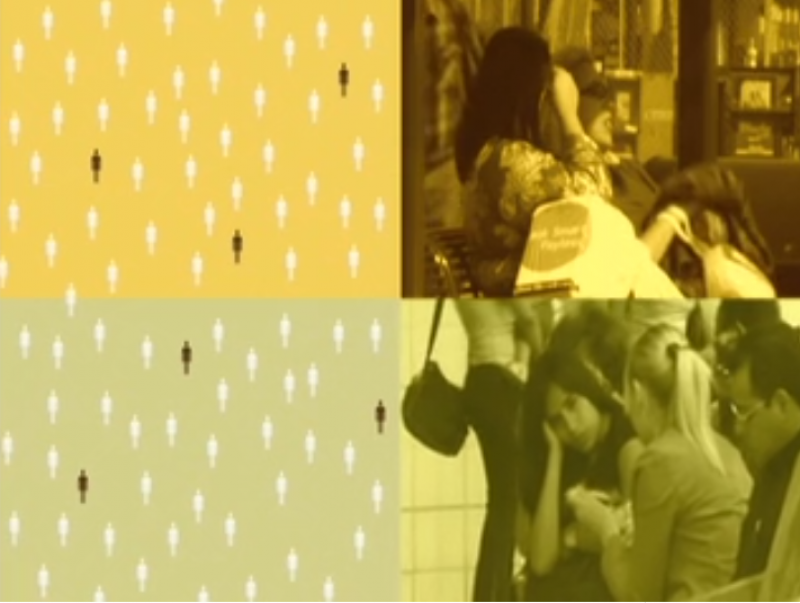The Good Rumor Project, 2005
The Good Rumor Project appropriates and replicates the model of a socio-political experiment. Seeking to invert the negative effects of rumor, Måns Wrange and his collaborators created two “good rumors”—one concerning Tijuana that was spread in San Diego and one about San Diego that was spread in Tijuana. In contrast to conventional rumors, which tend to be formulated by one group of people about another group of people, the “good rumors” were constructed in dialogue with the actual subjects of the rumors through a series of focus groups. The “good rumors” were disseminated through a multifaceted strategy that combined advanced marketing techniques—viral/word-of-mouth marketing—with structures borrowed from rumor theory, as well as recent research on small-world networks and social network analysis.
A selection of people from San Diego and Tijuana were recruited as “nodes” to spread the “good rumors,” and the evolution of the rumors throughout the border region was tracked by means of an interactive website. A video produced in collaboration with Yonke Art both tracked and helped to publicize the project. Over the course of inSite_05 the rumors spread exponentially, appearing in magazines, on radio programs, and in biogs. They never really achieved a tipping point in the sense that they became prevalent throughout the region; rather, over time they seemed to mutate. It became ever more difficult to track their evolution as they were absorbed back into the narrative threads of the border area.
By appropriating the advertising strategy of word-of-mouth marketing and employing it to promote a positive sense of trust and partnership instead of rampant consumerism, Wrange inverts and subverts late capitalism’s tropes of social coercion. The collective participation of social actors in the construction of narrative fictions that were inserted into the communication networks of the border region reveals how society is predicated on an evolving communicative process. It suggests the political potential for citizens to be actively involved in co-creating the polis through their communicative acts.
Curators: Osvaldo Sánchez and Donna Conwell
Venues: San Diego and Tijuana
Co-participants
Enrique Herrera
Janet Colletti
Igor Isaksson
Don Sciglimpaglia
Manuel Chavarin
Dream Addictive Laboratory
Fiamma Montezemolo
Jeromy Stallings
William Jewson
Maria Karlsson
Nodes
inSiteproduction
Daniel Martínez
Márgara de León
Joy Decena
Zlatan Vukosavljevic
Esmeralda Ceballos
Individual acknowledgments
Allen Guilmette
Rodolfo Cruz Piñeiro
Francisco Barraza
Redi Gomis
Luis Eduardo Cantú
Aarón Martinez
Jesús Madrigal
Manuel Quintana
Betty Juárez
Paty Blake
Cristina Astorga
Alicia Macedo
Fernando López Mateos
Lucille Neeley
Eloisa Haudenschild
Lola Cuenca
Karen Mercaldo
Randy Robbins
Cathe Burnham
Yolanda Walther-Meade
Hans Fjellestad
Damon Holtzborn
Dustin Hassard
Chris Ferreria
Ivette Herman
Charles Reilly
Joy Espiritu
Pat Moore
Tiffany Lendrum
Beverly Schroeder
Organizations
Metro Publicidad
Plaza Research
Ninthlink
VC Asociados
Yonke Arte
Galatea
Dream Addictive Laboratory
CCDC
L Street Gallery
JMI Realty
OMNI Hotel
Sponsors
Metro
